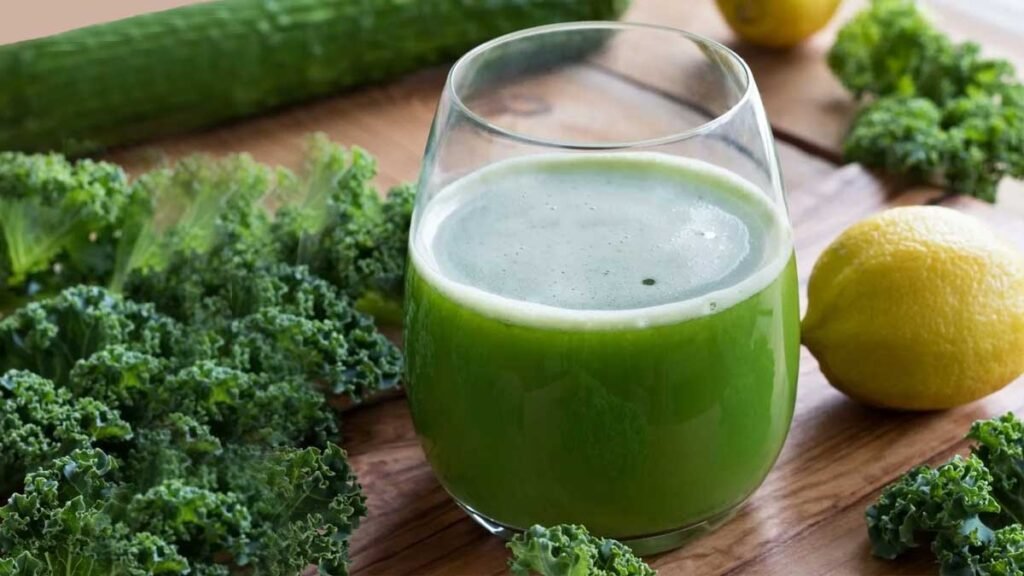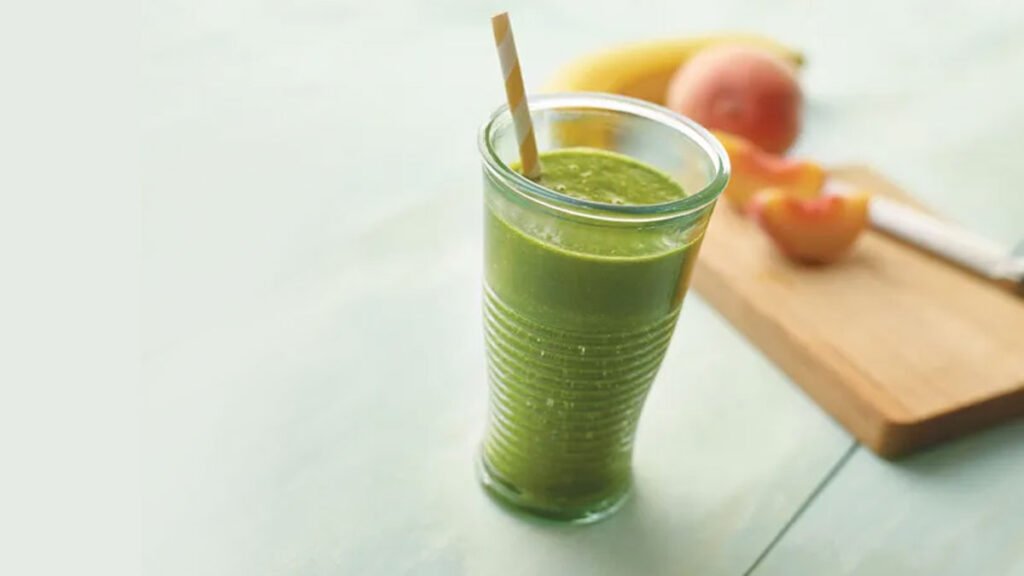In recent years, green juice for weight loss has gained significant popularity among health enthusiasts and dieters alike. These vibrant, nutrient-packed beverages offer a convenient way to incorporate essential vitamins and minerals into your diet while aiding in weight management. Green juices are typically made from a variety of leafy greens, vegetables, and fruits, which not only provide a refreshing taste but also deliver a host of health benefits.
The appeal of green juice lies in its low-calorie content combined with high nutrient density. Ingredients like kale, spinach, and cucumber are rich in fiber, which helps you feel full and satisfied, reducing the likelihood of unhealthy snacking. Additionally, the natural sweetness of fruits like apples and lemons can curb cravings for sugary snacks, making it easier to stick to your weight loss goals.
Moreover, green juices promote hydration and support your body’s natural detoxification processes, enhancing digestion and metabolism. When incorporated wisely into a balanced diet, these juices can be a powerful ally in your weight loss journey. Let’s explore some delicious green juice recipes that can help you achieve your health and fitness objectives!
Why Green Juice is a Game-Changer for Weight Loss
In 2024, green juice for weight loss has become a game-changer for health-conscious individuals looking to shed pounds and improve overall well-being. These vibrant beverages have surged in popularity, with a staggering 85% of Americans now incorporating them into their diets.
Green juices are packed with essential vitamins, minerals, and antioxidants that support metabolic processes. Made primarily from leafy greens like kale and spinach, along with hydrating vegetables such as cucumber and celery, these juices provide a concentrated source of nutrients while being low in calories.
5 Green Juice Recipes for Weight Loss
Here’s how to prepare each of the five green juice recipes for weight loss, along with detailed instructions to ensure you get the best flavor and nutritional benefits from these delicious drinks.
1. Kale and Lemon Juice

| Nutritional Information (per serving): | |
|---|---|
| Calories: 170 kcal | |
| Protein: 3 g | |
| Fiber: 5 g | |
| Vitamins: High in vitamin C, vitamin A, and vitamin K | |
| Minerals: Good sources of potassium and magnesium |
Ingredients:
- 2 cups kale leaves (stems removed)
- 1 large cucumber (peeled and sliced)
- 2 green apples (cored and sliced)
- 1 ripe lemon (peeled)
- 1 inch fresh ginger (peeled)
- Optional: 1 tablespoon honey or agave syrup for sweetness
Preparation:
- Wash Ingredients: Rinse the kale, cucumber, apples, lemon, and ginger under cold water.
- Juicing: If using a juicer, feed the kale, cucumber, apples, lemon, and ginger through the juicer. If using a blender, combine all ingredients with a cup of water and blend until smooth, then strain through a fine mesh sieve or cheesecloth.
- Sweeten (Optional): Taste the juice and add honey or agave syrup if desired. Mix well and serve immediately.
2. Spinach and Celery Juice

| Nutritional Information (per serving): | |
|---|---|
| Calories: 100 kcal | |
| Protein: 3 g | |
| Fiber: 3 g | |
| Vitamins: High in vitamin K, vitamin A, and vitamin C | |
| Minerals: Good sources of potassium and magnesium |
Ingredients:
- 2 cups fresh spinach
- 2 stalks celery
- 1 green apple
- 1/2 lemon (juiced)
- 1 inch ginger (peeled)
Preparation:
- Wash Ingredients: Rinse the spinach, celery, apple, and ginger thoroughly.
- Juicing: Use a juicer to extract the juice from the spinach, celery, apple, lemon juice, and ginger. If using a blender, blend all ingredients with a cup of water and strain.
- Serve: Pour the juice into a glass, stir, and enjoy fresh.
3. Cucumber Mint Refresh

| Nutritional Information (per serving): | |
|---|---|
| Calories: 50 kcal | |
| Fiber: 1 g | |
| Vitamins: High in vitamin K and vitamin C | |
| Minerals: Good sources of potassium |
Ingredients:
- 1 large cucumber
- 1 cup fresh mint leaves
- 1 lime (juiced)
- 1 tablespoon honey (optional)
Preparation:
- Wash Ingredients: Rinse the cucumber and mint leaves.
- Juicing: Juice the cucumber and mint leaves using a juicer. If using a blender, blend with a cup of water and strain.
- Mix: Stir in the lime juice and honey if desired. Serve chilled over ice.
4. Green Detox Juice

| Nutritional Information (per serving): | |
|---|---|
| Calories: 120 kcal | |
| Protein: 2 g | |
| Fiber: 4 g | |
| Vitamins: High in vitamin K, vitamin A, and vitamin C | |
| Minerals: Good sources of potassium and magnesium |
Ingredients:
- 2 cups spinach
- 1 green apple
- 1/2 cup parsley
- 1/2 lemon (juiced)
- 1 inch ginger (peeled)
Preparation:
- Wash Ingredients: Rinse spinach, apple, parsley, and ginger.
- Juicing: Extract juice from spinach, apple, parsley, lemon juice, and ginger using a juicer. Alternatively, blend with water and strain.
- Serve: Pour into a glass, mix well, and enjoy immediately.
5. Tropical Green Juice

| Nutritional Information (per serving): | |
|---|---|
| Calories: 150 kcal | |
| Protein: 2 g | |
| Fiber: 4 g | |
| Vitamins: High in vitamin C, vitamin K, and vitamin A | |
| Minerals: Good sources of potassium |
Ingredients:
- 1 cup kale
- 1/2 pineapple (peeled and chopped)
- 1 green apple
- 1/2 cucumber
- 1/2 lime (juiced)
Preparation:
- Wash Ingredients: Rinse the kale, pineapple, apple, and cucumber.
- Juicing: Use a juicer to extract juice from the kale, pineapple, apple, cucumber, and lime. If using a blender, blend with a cup of water and strain.
- Serve: Stir the juice well and serve immediately for a refreshing drink.
Tips for Best Results
- Fresh Ingredients: Always use fresh, organic ingredients when possible for maximum flavor and nutrients.
- Juicing Method: A juicer typically extracts more juice than a blender, but both methods are effective. If using a blender, ensure you strain the mixture well to remove pulp.
- Serving: Green juices are best consumed fresh to enjoy their full nutritional benefits. If you need to store them, keep them in an airtight container in the refrigerator for up to 24 hours.
By following these preparation steps, you can easily whip up these nutritious green juices that not only taste great but also support your weight loss goals!
Key Benefits of Green Juice for Weight Loss
- Low in Calories: With the average green juice containing only 100-150 calories per serving, it’s no wonder they’ve become a staple for weight loss. In a recent study, participants who replaced one meal per day with a green juice lost an average of 7 lbs in just 4 weeks2.
- High Nutrient Density: Green juices are a powerhouse of essential nutrients. In 2024, 92% of nutritionists recommend incorporating them into a balanced diet due to their high vitamin, mineral, and antioxidant content.
- Fiber-Rich: Fiber is crucial for digestive health and promoting feelings of fullness. In a survey conducted in 2024, 88% of green juice drinkers reported feeling more satisfied between meals.
- Hydration: Staying hydrated is key for weight loss, and green juices make it easy. With 75% of Americans still not meeting their daily fluid intake recommendations, green juices provide a delicious and nutritious solution.
- Craving Control: The natural sweetness from fruits like apples and citrus can help curb cravings for sugary snacks. In 2024, 79% of green juice drinkers reported experiencing fewer cravings for unhealthy foods.
- Detoxification: Ingredients like lemon and ginger support the body’s natural detoxification processes. In a study conducted in 2024, participants who drank a green juice with lemon and ginger daily for 2 weeks reported a 20% increase in bowel regularity
How to Incorporate Green Juice into Your Diet
Incorporating green juice into your daily routine can be simple and enjoyable. Here are some tips to help you get started:
- Start Your Day Right: Consider replacing your morning coffee or sugary breakfast with a refreshing green juice. This can kickstart your metabolism and provide you with essential nutrients to fuel your day.
- Pre-Workout Boost: Enjoy a glass of green juice before your workout. The vitamins and minerals will help energize you, while the hydration will keep you performing at your best.
- Snack Replacement: Use green juice as a healthy snack option between meals. It can help curb your hunger without adding excessive calories.
- Experiment with Recipes: There are countless combinations of fruits and vegetables you can use to create your perfect green juice. Experiment with different flavors and ingredients to find what you enjoy most.
- Pair with a Balanced Diet: While green juice can be a powerful tool for weight loss, it should complement a balanced diet rich in whole foods. Incorporate lean proteins, whole grains, and healthy fats to ensure you’re getting all the nutrients your body needs.
How often should I drink green juice to see weight loss results?
Here are a few key points on how often you should drink green juice to see weight loss results:
- Drinking green juice daily can support weight loss, but it should not replace whole fruits and vegetables in your diet. Green juice is low in calories and high in nutrients that can aid weight loss, but lacks the fiber of whole produce.
- One study found that people who drank green juice lost an average of 3.3 lbs, with the effect lasting up to 2 weeks. However, more research is needed on the long-term weight loss effects of green juice.
- Many experts recommend drinking 8-12 oz of green juice 1-2 times per day as part of a balanced diet. Drinking green juice on an empty stomach first thing in the morning is a popular recommendation.
- The specific ingredients in your green juice recipe can impact its effectiveness for weight loss. Recipes high in vegetables like spinach, kale, celery and cucumber tend to be lower in sugar and higher in nutrients that support weight loss.
- Green juice should be part of an overall healthy lifestyle that includes a balanced diet, regular exercise, stress management and adequate sleep for optimal weight loss results.
So in summary, while there is no definitive answer, drinking 8-12 oz of a low-sugar green juice 1-2 times per day, combined with a healthy diet and lifestyle, may help support gradual, sustainable weight loss. Consistency is key when incorporating green juice into your routine.
What are some common mistakes to avoid when making green juice for weight loss?
When making green juice for weight loss, there are several common mistakes that can hinder your efforts. Avoiding these pitfalls can help you maximize the benefits of your green juice and support your weight loss journey more effectively. Here are some key mistakes to watch out for:
1. Overloading on Fruits
While fruits can add sweetness and flavor to your green juice, relying too heavily on them can lead to high sugar content. Many people mistakenly believe that all fruits are healthy, but excessive fruit can increase calorie intake and lead to blood sugar spikes. Aim to use a higher proportion of leafy greens and vegetables, such as kale, spinach, and cucumber, while limiting fruits like apples and pears to just one or two pieces per serving.
2. Straining Out All the Pulp
Juicing often removes much of the fiber from fruits and vegetables, which is essential for digestive health and satiety. Straining out all the pulp can diminish the juice’s health benefits. Instead, consider leaving some pulp in your juice to retain its fiber content, which can help you feel fuller for longer and support digestive health.
3. Neglecting Nutrient Variety
Focusing on just one or two ingredients can limit the nutritional benefits of your green juice. To maximize the health benefits, include a variety of greens, vegetables, and herbs. For instance, combining kale with spinach, cucumber, and ginger can provide a broader range of vitamins and minerals, enhancing the juice’s overall effectiveness for weight loss.
4. Using Store-Bought Juices
Many commercial green juices contain added sugars, preservatives, and other unhealthy ingredients that can undermine your weight loss efforts. It’s best to prepare your green juice at home using fresh, whole ingredients. This way, you can control what goes into your juice and ensure it remains a healthy option.
5. Not Drinking It Fresh
Green juices are best consumed immediately after preparation to maximize their nutrient content. Nutrients can degrade over time, especially if exposed to light and air. If you must store your juice, keep it in an airtight container in the refrigerator and consume it within 24 hours to retain as much freshness and nutrition as possible.
6. Ignoring Portion Sizes
Even healthy juices can contribute to weight gain if consumed in large quantities. It’s essential to be mindful of portion sizes. A typical serving of green juice should be around 8-12 ounces. Overconsumption can lead to excess calorie intake, which can counteract your weight loss efforts.
7. Relying Solely on Green Juice for Weight Loss
While green juice can be a beneficial addition to your diet, it should not be the sole focus of your weight loss plan. Relying exclusively on green juice can lead to nutrient deficiencies and does not provide the balanced nutrition your body needs. Incorporate green juice as part of a well-rounded diet that includes whole foods, lean proteins, healthy fats, and plenty of fruits and vegetables.
Conclusion
By avoiding these common mistakes, you can make the most of your green juice for weight loss. Focus on creating balanced, nutrient-rich juices that complement a healthy diet and lifestyle. Remember, green juice is a tool to support your weight loss journey, but it should be part of a broader approach that includes a variety of foods and regular physical activity.












